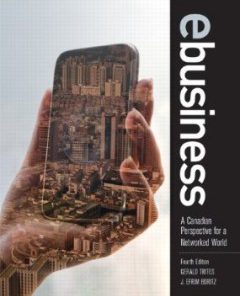Test Bank for Criminology A Canadian Perspective 8th Edition by Linden
$35.00 Original price was: $35.00.$26.50Current price is: $26.50.
Test Bank for Criminology A Canadian Perspective 8th Edition by Linden
Instant download Test Bank for Criminology A Canadian Perspective 8th Edition by Linden pdf docx epub after payment.

Product details:
- ISBN-10 : 0176562060
- ISBN-13 : 978-0176562069
- Author: Rick Linden
- Part 1: Crime and Society
- Ch 1: Crime, Criminals, and Criminology
- Ch 1: Introduction
- Ch 1: Learning Objectives
- A Violent Crime: The Sand Brothers
- A White-Collar Crime: The Downfall of Conrad Black
- What Is Criminology?
- Rules and Laws: The Regulation of Behaviour
- Who Makes the Rules? Conflict versus Consensus Theories of Law
- Criminology Is an Evolving Discipline: The Emerging Fields of Green Criminology, Terrorism Studies,
- Ch 1: Summary
- Ch 2: The Social Context of Dispute Settlement and the Rise of Law
- Ch 2: Introduction
- Ch 2: Learning Objectives
- Dispute Resolution in Small-Scale Society
- The Transformation from Small-Scale Society to the State
- Transformation in the Forms of Dispute Resolution
- A Brief History of the Modern State
- Law and Transition to Capitalism
- Contemporary State Power
- Being “Tough” on Street Crime, but Soft on “Suite” Crime
- Full Circle: Restorative Justice and a Return to Original Forms of Dispute Settlement?
- Ch 2: Summary
- Ch 3: Criminal Law
- Ch 3: Introduction
- Ch 3: Learning Objectives
- What Is a Crime?
- What Is Criminal Law?
- Impact of the Canadian Charter of Rights and Freedoms on Criminal Law
- The Basic Elements of a Crime: Actus Reus and Mens Rea
- Becoming a Party to a Criminal Offence
- The Use of Criminal Law as a Preventative Tool: Inchoate Offences
- Defences to a Criminal Charge
- Ch 3: Summary
- Ch 4: Counting Crime
- Ch 4: Introduction
- Ch 4: Learning Objectives
- Controversies over Counting Crime
- Statistics on the Criminal Justice System
- How Much Crime?
- Official Statistics: Canadian Uniform Crime Reports
- Victimization Surveys
- The Future of Crime and Criminal Justice Statistics
- Ch 4: Summary
- Ch 5: Correlates of Criminal Behaviour
- Ch 5: Introduction
- Ch 5: Learning Objectives
- Age as a Correlate of Criminal Behaviour
- Gender as a Correlate of Crime
- Race and Crime
- Aboriginal Peoples and the Canadian Criminal Justice System
- Why Are Aboriginal Peoples Overrepresented in the Criminal Justice System?
- Drug and Alcohol Misuse as a Correlate of Crime
- Socio-economic Status and Criminal Behaviour
- Spatial Location as a Correlate of Crime
- Conclusion
- Ch 5: Summary
- Ch 6: Feminism and Criminology
- Ch 6: Introduction
- Ch 6: Learning Objectives
- The Invisibility of Women
- Theories of Women’s Crime
- Violence Against Women
- Blurred Boundaries: Women as Victims and Offenders
- The Violent Woman
- Gendering Crime
- Ch 6: Summary
- Ch 7: Victimology, Victim Services, and Victim Rights in Canada
- Ch 7: Introduction
- Ch 7: Learning Objectives
- Prevalence, Impact, and Needs of Victimization
- The Origins of Victimology and International Standards
- Policing, Victim Services, Reparation, Courts, and Prevention
- Systemic Ways to Shift, Reinvest, and Rebalance Justice for Crime Victims
- Ch 7: Summary
- Part 2: Explanations of Crime
- Ch 8: Early Theories of Criminology
- Ch 8: Introduction
- Ch 8: Learning Objectives
- The Classical School
- The Statistical School: Social Structure and Crime
- Lombroso and the Positive School
- Biological Theories in the Early 20th Century
- Ch 8: Summary
- Ch 9: Psychological Perspectives on Criminality
- Ch 9: Introduction
- Ch 9: Learning Objectives
- Psychological Theories of Crime
- Antisocial Personality
- Crime and Mental Illness
- Ch 9: Summary
- Ch 10: Strain Theories
- Ch 10: Introduction
- Ch 10: Learning Objectives
- Durkheim: The Functions of Crime and Anomie
- Strain as a Feature of Society (Rather than of Individuals)
- Responding to Opportunistic Crimes of the Powerful
- Reducing Crime by Changing the Behaviour of the Elite
- Generalizing Merton’s Strain Theory to Other Cultures
- The Shift from Control to Opportunity Structures
- Elijah Anderson: The Code of the Street
- Assessing Strain Theories
- Uses of Strain Theory
- John Braithwaite: Greater Class Mix and the Reduction of Crime
- Policy Implications
- Ch 10: Summary
- Ch 11: Conflict Theories
- Ch 11: Introduction
- Ch 11: Learning Objectives
- Cultural Conflict Theory: Thorsten Sellin
- Group Conflict Theory
- Marxist Conflict Perspectives in Criminology
- Left Realism
- Ch 11: Summary
- Ch 12: Contemporary Critical Criminology
- Ch 12: Introduction
- Ch 12: Learning Objectives
- What Is Critical about Critical Criminology?
- Critical Criminology in English Canada
- Governmentality and Power: Foucault and Criminology
- Actuarialism, Risk, and the Risk Society
People also search:
Criminology A Canadian Perspective 8th Edition
Criminology A Canadian Perspective 8th Edition pdf
Criminology A Canadian Perspective
criminology job opportunities in canada
criminology jobs in canada for foreigners
You may also like…
Solution Manual
Solution Manual for Understanding Human Resources Management A Canadian Perspective by Peacock
Test Bank
Psychology of Criminal Behaviour A Canadian Perspective Canadian 2nd Edition Brown Test Bank
Solution Manual
Exploring Sociology A Canadian Perspective Canadian 3rd Edition Ravelli Solutions Manual
Test Bank
Test Bank for eBusiness A Canadian Perspective for a Networked World, 4th Edition : Trites












